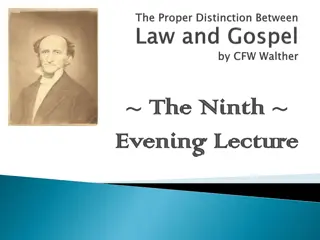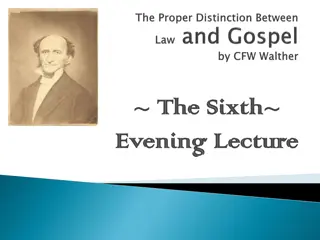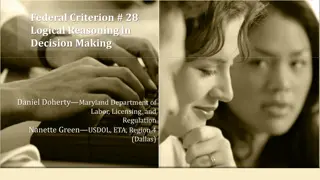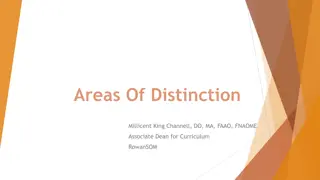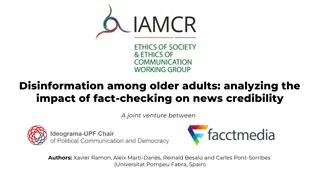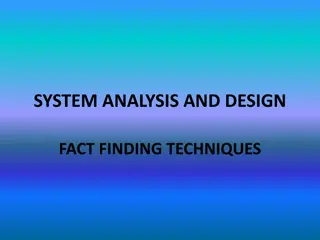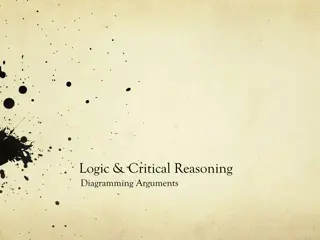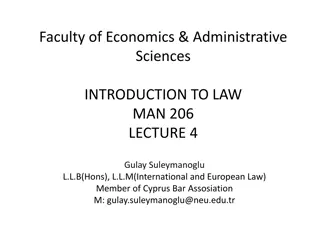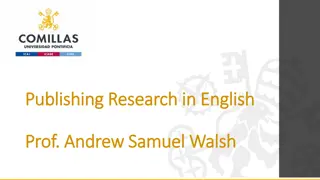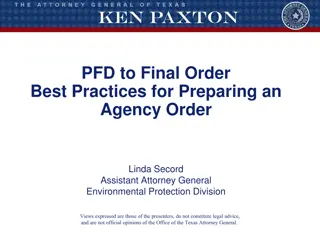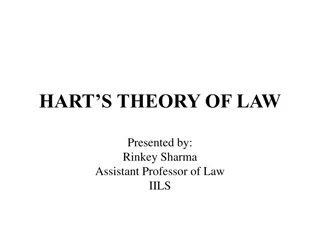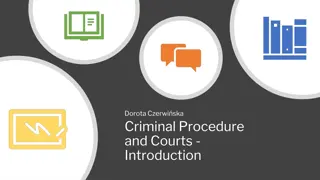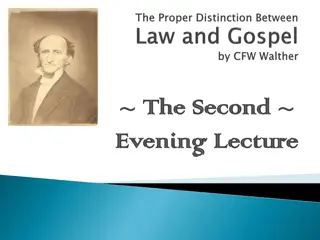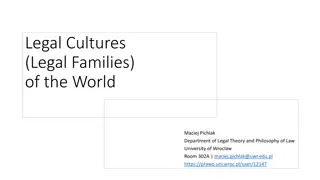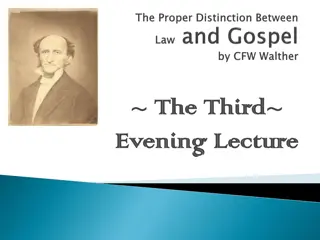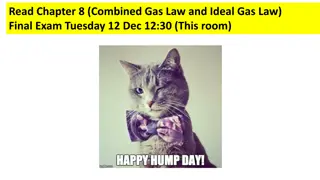Understanding the Distinction Between Findings of Fact and Conclusions of Law
The distinction between findings of fact and conclusions of law is explored through various legal opinions and cases. The complexity and importance of this distinction are highlighted, with instances where findings are deemed as conclusions and vice versa. Scholars and legal experts have pondered over this distinction, emphasizing its significance in legal proceedings.
Download Presentation

Please find below an Image/Link to download the presentation.
The content on the website is provided AS IS for your information and personal use only. It may not be sold, licensed, or shared on other websites without obtaining consent from the author. Download presentation by click this link. If you encounter any issues during the download, it is possible that the publisher has removed the file from their server.
E N D
Presentation Transcript
CONCLUSIONS ABOUT FINDINGS OF FACT . . . AND LAW Judge W. Neal McBrayer
Some time ago, after a fair amount of such reading, I reached the humbling conclusion that I am not very good at distinguishing between findings and conclusions. Nevin Van de Streek, Why Not Findings of Law & Conclusions of Fact & Opinions About Both?, 70 N.D.L. REV. 109, 110 (1994).
The importance of the law-fact distinction is surpassed only by its mysteriousness. Ronald J. Allen & Michael S. Pardo, The Myth of the Law-Fact Distinction, 97 NW. U.L. REV. 1769 (2003).
In re Steiner, 55 B.R. 1, 3 (Bankr. E.D. Cal. 1983) To the extent that any of the findings of fact set forth above are deemed to be conclusions of law, or to the extent that any of the foregoing conclusions of law are deemed to be findings of fact, the same shall be deemed conclusions of law or findings of fact, as the case may be.
In re Panache Dev. Co., Inc., 123 B.R. 929, 931 (Bankr. S.D. Fla. 1991) The foregoing Findings of Fact, to the extent they constitute conclusions of law, are hereby incorporated by reference and denominated Conclusions of Law. To the extent that these Conclusions of Law constitute findings of fact, they are hereby incorporated and denominated Findings of Fact.
Transload & Transp., Inc. v. Superior Oil Co., 579 F. Supp. 1053, 1054 (E.D. La. 1984) To the extent any of the following findings of fact constitute conclusions of law, they are adopted as such. To the extent any conclusions of law constitute findings of fact, they are so adopted.
B & B Schiffahrts GmbH & Co. v. Am. Diesel & Ship Repairs, Inc., 136 F. Supp. 2d 590, 591 (E.D. La. 2001) To the extent the findings of fact are more properly classified as conclusions of law, they should be so considered; and to the extent the conclusions of law are more properly classified as findings of fact, they should be so considered.
Rodriguez v. Barrita, Inc., 62 F. Supp. 3d 936, 938 n.1 (N.D. Cal. 2014) This order renders additional findings of fact and conclusions of law pursuant to Federal Rule of Civil Procedure 52. To the extent that any conclusions of law are inadvertently labeled as findings of fact (or vice versa), the findings and conclusions shall be considered in [their] true light, regardless of the label that the ... court may have placed on [them]. Tri-Tron International v. Velto, 525 F.2d 432, 435-36 (9th Cir.1975).
Pullman-Standard v. Swint, 465 U.S. 273, 591 (1982) Rule 52(a) does not furnish particular guidance with respect to distinguishing law from fact. Nor do we yet know of any other rule or principle that will unerringly distinguish a factual finding from a legal conclusion.
Fed. R. Civ. P. 52(a)(1) In an action tried on the facts without a jury or with an advisory jury, the court must find the facts specially and state its conclusions of law separately.
Tenn. R. Civ. P. 52(a)(1) In all actions tried upon the facts without a jury, the court shall find the facts specially and shall state separately its conclusions of law and direct the entry of the appropriate judgment.
In Suits at common law, where the value in controversy shall exceed twenty dollars, the right of trial by jury shall be preserved, and no fact tried by a jury, shall be otherwise reexamined in any Court of the United States, than according to the rules of the common law.
Tull v. U.S., 481 U.S. 412, 417 (1987) Prior to the [17th] Amendment s adoption, a jury trial was customary in suits brought in the English law courts. In contrast, those actions that are analogous to 18th-century cases tried in courts of equity or admiralty do not require a jury trial.
DIVIDING DECISION MAKING AUTHORITY Judge and Jury Trial Court and Appellate Court
DIVIDING DECISION MAKING AUTHORITY Legal Issues = De Novo Review Factual Issues = Deferential Review
Why All the Confusion? The apparent confusion stems from a false assumption (namely that legal and factual issues constitute discrete ontological categories) compounded by the enormous complexity of the variables affecting the pragmatic allocative decision.
On such and such a date Darwin Debtor gave a promissory note and a mortgage on Black Acre to Matthew Moneylender.
JOHN JAY MCKELVEY, MCKELVEYON EVIDENCE (5th ed. 1944) Wherever the thing to be determined involves the application of some principle of the statue or common law, we have a question of law. The question of the existence or nonexistence of a physical object, act, state of things, or condition is a question of fact.
CJS TRIAL The phrase conclusions of law means those that the trial judge concludes flow from the ultimate facts found and illuminated by subsidiary facts. The phrase findings of fact means a statement of the ultimate facts, the material facts that resolve the issues raised, or determinations by a court from the evidence of a case concerning the facts asserted by one party and denied by another.
17B C.J.S. Contracts 1034 (2015) The question of whether facts established by a party constitute a breach of contract is one of law to be determined by the court, but whether facts sufficient to constitute a breach of contract have been established is ordinarily a question of fact to be determined by the trier of fact, under proper instructions from the court. Thus, when the facts are undisputed or conclusively established or can lead to only one reasonable answer, the question whether there has been a breach of a contract is one of law for the court. When the facts are in dispute, or reasonable persons could differ as to the inferences to be drawn from the facts, the question must be determined by the trier of fact, and under such circumstances summary judgment is improper.
Mixed Questions of Law and Fact Findings of Fact Conclusions of Law


